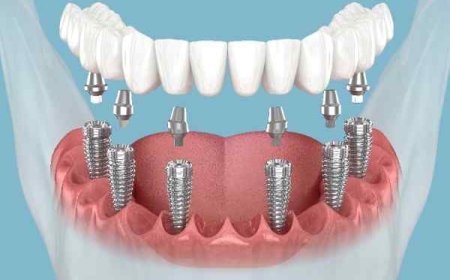The Cost Of Treating Bone Cancer In The United States
The staging process is the next important procedure that is performed after the type of cancer in the bone has been identified.

Bone cancer may be an under-reported, but deadly condition that requires a particular treatment plan. The best method of treating bone cancer is dependent on knowing the type and the extent of cancer as well as as well as the location and size of the tumors and general health and also the patient's preferences. Since the treatment for bone cancer is a complex procedure based on these factors, working closely with a professional medical team is essential to ensure the highest quality of results. Here's a brief outline of the steps you need to follow when choosing the most effective option for treating cancer of the bone.
The costs of treating osteoporosis across the U.S. vary based on the stage of treatment and running into the thousands for each session. Although there are a variety of options available to treat cancer, drugs such as Lenalidomide 25 aid in managing certain types of cancer effectively under the supervision of a medical professional.
1. Type and Stage of Bone Cancer
The first step to determine which is the best treatment method for bone cancer is to identify the type of cancer present. Bone cancer may be primary (originating in the bone) or metastatic (spreading throughout the body). The most frequent kinds of bone cancer that are primary are osteosarcoma Ewing's Sarcoma Chondrosarcoma the chondromas to mention some.
-
Osteosarcoma is a very common type of cancer found in children and young adults. The cancer starts in the bone and occurs in the arms or legs.
-
Ewing's Sarcoma The cancer is typically located in the pelvis, or long bones. It is typically seen in adolescents and young people.
-
Chondrosarcoma The reason is due to cartilage cells. The disease is more prevalent in those who are aging.
-
Metastatic Bone Cancer:- This occurs when cancer that originated from an organ, such as the breast, lung or prostate, spreads onto the bones.
The staging process is the next important procedure that is performed after the type of cancer in bone has been identified. The process of staging can help assess the extent of cancer has expanded. This could affect the choices for treatment. For instance, early-stage cancers can be treated with surgery alone, while later stages could require a combination of surgery, chemotherapy and radiation.
2. Location and Size of the Tumor
The size and location of the tumor could affect the treatment plan. Certain regions, like the spine or pelvis, may necessitate more careful surgical techniques because of the proximity of vital nerves or organs.
The size and location that the tumor is playing an important part in determining the best way to tackle cancer effectively. Anastrozole is a hormone therapy, aids in slowing the growth of tumors in patients with hormone-sensitive bone cancer. Examples:
-
Localized tumors: Surgery is often the first choice to eliminate cancer.
-
Advance Tumors : When the tumor has spread to other parts of the body or is a large size, the combination of chemotherapy, radiation or surgery could be necessary.
3. Different Treatment Modalities
There are many ways to treat bone cancer. The most effective approach is usually a combination of the following methods:
-
Surgery: The principal goal of surgery is to remove the cancerous tumor while preserving as much normal bone as is possible. In some instances, the bone affected is repaired using prosthetics or bone grafts, and the tumor can be removed while also preserving the limb performing the limb-salvage procedure.
In more difficult situations, amputation could be necessary, but this isn't so common with modern techniques for surgery.
-
Chemotherapy involves the application of medicines to kill and destroy cells that are growing rapidly. The majority of doctors use this treatment to fight bone cancers that are at the highest risk of spreading, such as osteosarcoma and Ewing's Sarcoma, because both are likely to spread into other parts of the body. They can prescribe treatment before surgery (neoadjuvant) to decrease tumors, or after surgery (adjuvant) to eliminate leftover cancerous cells.
-
Radiation Therapy is the use of high-energy radiation to destroy cancerous cells or shrink tumors. It is often used in conjunction with chemotherapy and surgery. It is especially beneficial for tumors that are difficult to remove surgically, or in cases where surgery may cause significant functional impairment. It can also be used to treat bone metastases or to alleviate discomfort caused by cancerous bone.
4. Patient's Overall Health
The patient's medical history and overall health impact the decision to treat. Doctors consider the risks and benefits when determining a patient's eligibility, based on their immune system's capacity along with other health issues.
A patient's overall health play an important part in determining the most effective method to treat cancer with drugs like Mamofen helping to treat cancers sensitive to hormones.
The aim is to come up with an method of treatment specifically designed to treat cancer while minimizing side adverse effects, and also ensuring the patient's quality of life. Palliative treatments may be an option for treating cancers that are incurable that can ease the pain and discomfort.
5. Patient's Preferences and Lifestyle
When determining the best treatment plan, factors like lifestyle preferences, preferences and goals, addition to medical concerns, are a major factor. Patients may decide to retain their autonomy and the activities they enjoy, or take a more aggressive approach to maintain their health over time.
Patients must consult their physician about the potential consequences of each treatment as in addition to the possibility of recurrence, as as potential negative consequences. Support and counseling from family members can help in making a decision that's in line with the beliefs that the individual.
Conclusion
The best method of treating bone cancer is a matter of taking into account the kind of cancer, its stage as well as the location of treatments for the tumor, as well as the health of the patient and their preferences. Patients working with their medical professional make an informed choice customized to their particular needs to get the most effective results.

































